Un-/Learning Archives in the Age of the Sixth Extinction
[1]This workshop addressed archives as related to overlapping sites of nature/culture, climate change, deep time, and the built environment. The following texts and visual materials include an introduction to the workshop’s components and sites and individual participants’ research on workshop themes.
I. The Impossibility of a Planet
Jamie Allen, Jeremy Bolen
“The globe is on our computers. No one lives there.”
Gayatri Chakravorty Spivak
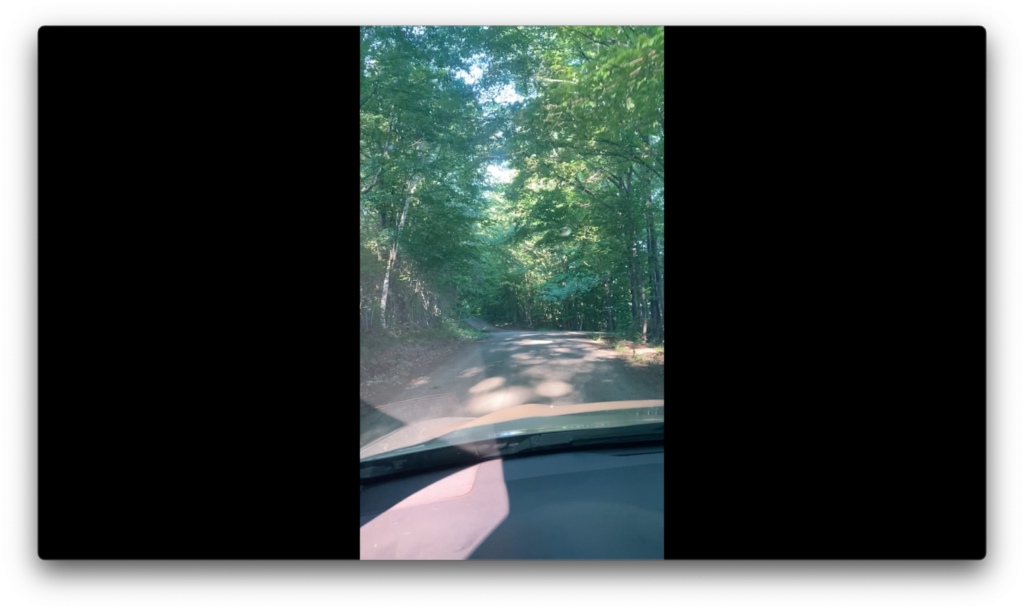
There are people in the world who are acutely aware of the planet they live on. Due to various and chosen pathways, attentions, vocations, situations or surroundings, these people use or choose the Earth as their frame of reference; the ground from which they think and act is planetary. In the geosciences and natural sciences this includes those who sample and interpolate data all over the globe, or derive large scale models of planet-wide systems. In economics and geopolitics, this includes those who monitor, template and influence things like currencies and economies, trade and shipping, conflict and policy. In the humanities and social sciences it is those who take up topics of the Anthropocene and the technosphere, those whose tendency is to attempt to describe the historical importance and transitions of (our always natural) global histories.
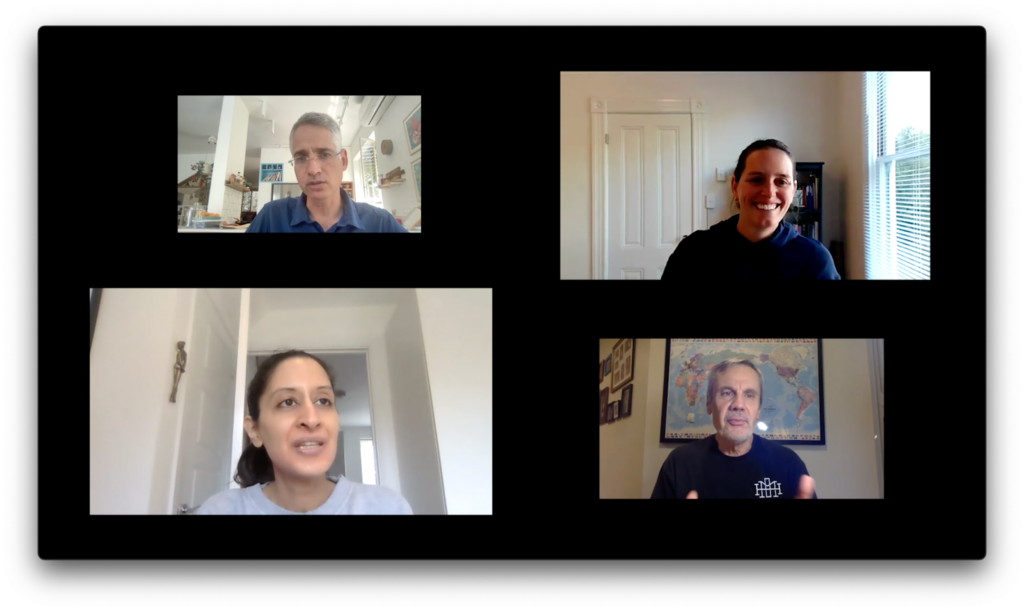

In some sense, of course, it is true that we all impute the earth. Most people with access to published media or other people who do can, and very rapidly, become more aware of their own globality, their global situation (somehow, a contradiction in terms). We seek out and are regularly thrust into geopolitical and geoscientific awareness and responsibility, regimes that go way beyond our local contexts and abilities of physical perception. That such a planitarity has become so normalized, as an assumption of cosmopolitanism, liberalism and internationalism in our times, fails to recall that our composed and mediated globalism is a particular kind of planetary experience and one that, as often as not, is imaginary, illusory, in tension, even fetishized. There is a tension between those who are from somewhere and those who perceive themselves to be from ‘everywhere’, and so ‘nowhere’. And like the rest of us, those whose job it is to derive, model, interpolate and project this condition of planetarity and its futures do so through partial, sampled, local and perspectival information.
“The Impossibility of a Planet”, by artists and researchers Jeremy Bolen and Jamie Allen, is an ongoing research project which seeks out dialogues with composers of planetary images, thought, narratives and models. These discussions develop the situation of this composition, and the changes wrought during an interruption to global travel, connections, conferences, diplomacy and labor: the Covid-19 pandemic. Featuring discussions with thinkers, scientists, scholars and researchers on the ways in which their practices, situations, and perspectives have changed through the period following March 2020, the project creates an archive and time capsule through a set of transcribed dialogues, intimate portraits of homes, environs and locales, a video series (2021-2022) and a sculptural media installation (2022-2023).
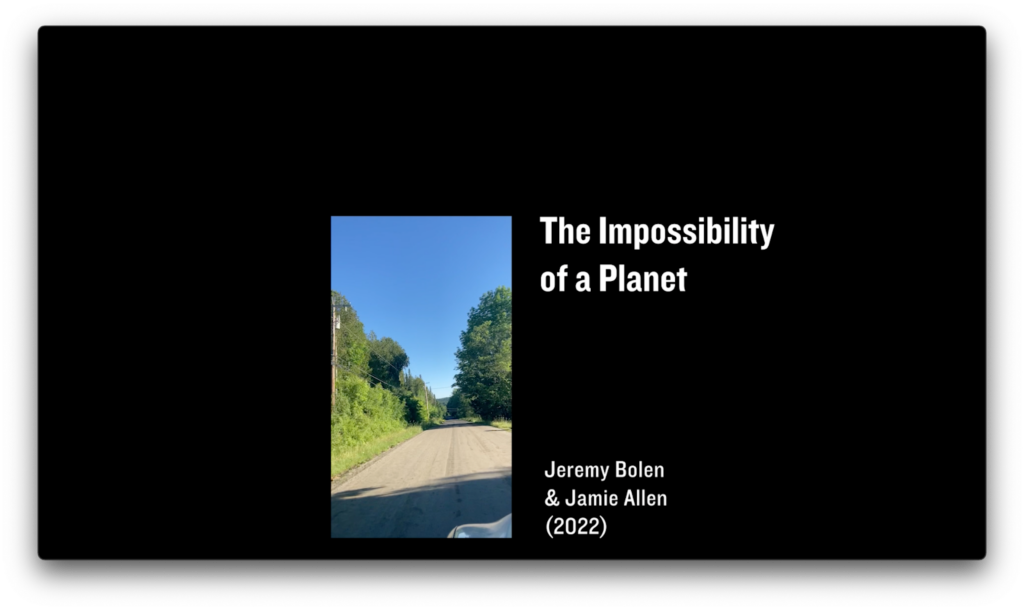
Our presumptions and assumptions about communication, mobility, travel and networks (social, physical, online and offline) have metamorphosed. We note things about our pre-pandemic lives that now seem both reasonable and unreasonable, and understand that we may now need to become new kinds of ‘planetary subjects’, undertaking new kinds of asynchronous, distributed and im/mediated pursuits of both art and science. We all have new responsibilities, goals and labors, new kinds of asynchronous, distributed and mediated pursuits in art, science, politics, and otherwise. What once seemed like ‘essential’ travel and work, has been questioned, postponed and/or canceled in ways that will alter our sense of what it is to think at the scale of planetarity. These are the shifts that we would like to trace with our compilation and interview series, our multimedia documentary that covers and traces the ways the planet, and the planitary, has changed during the pandemic and how we have necessarily changed along with it.
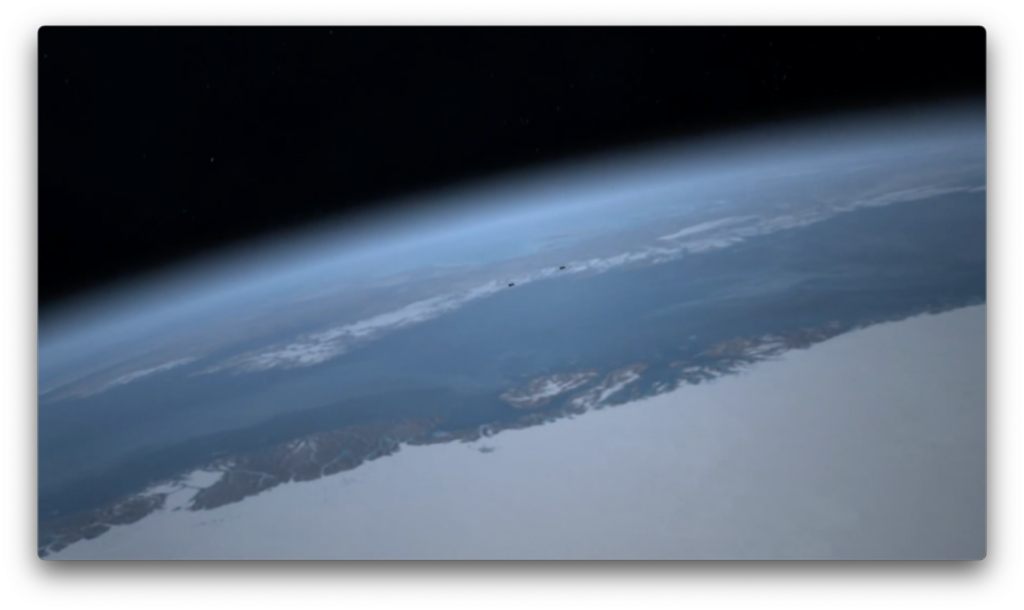

The project, overall, characterizes and shadows the practices of planetary practitioners: What kind of changes has our new era of viral biopolitics brought to the work of geological, Anthropocene and planetary science? Where and how does this work continue? What motivates the collaborations behind this research, what maintains connections between us, mediated and otherwise? How do we undertake and understand new lines of communication, trust and intimacy with our collaborators and peers, pre-, post- and during the pandemic? How does ‘empirical research’ and fieldwork change when ’the field’ becomes impossible to access, first hand? Where does the work get done?
Discussants include people such as Tim Lenton, the Director of the Global Systems Institute and Chair in Climate Change and Earth System Science at the University of Exeter; Tina Sikka, gender and culture researcher investigating the intersections of science and technology using food and environmental technologies as case studies; Jim Igoe, whose work situates which spectacles of nature connect and disconnect peoples’ experiences of their place in the world; Will Steffen, Inaugural Director of the ANU Climate Change Institute (2008-2012), currently a Climate Councillor with the Climate Institute; Allison Stegner, postdoctoral scholar at Stanford University who studies ecological and environmental change over the last 10.000 years; Jan Zalasiewicz, Senior Lecturer in Geology at the University of Leicester and Chair of the Anthropocene Working Group of the International Commission on Stratigraphy; Gabriela Barreto Lemos, researcher at the University of Massachusetts on quantum optics, entanglement, open quantum systems, and quantum chaos.
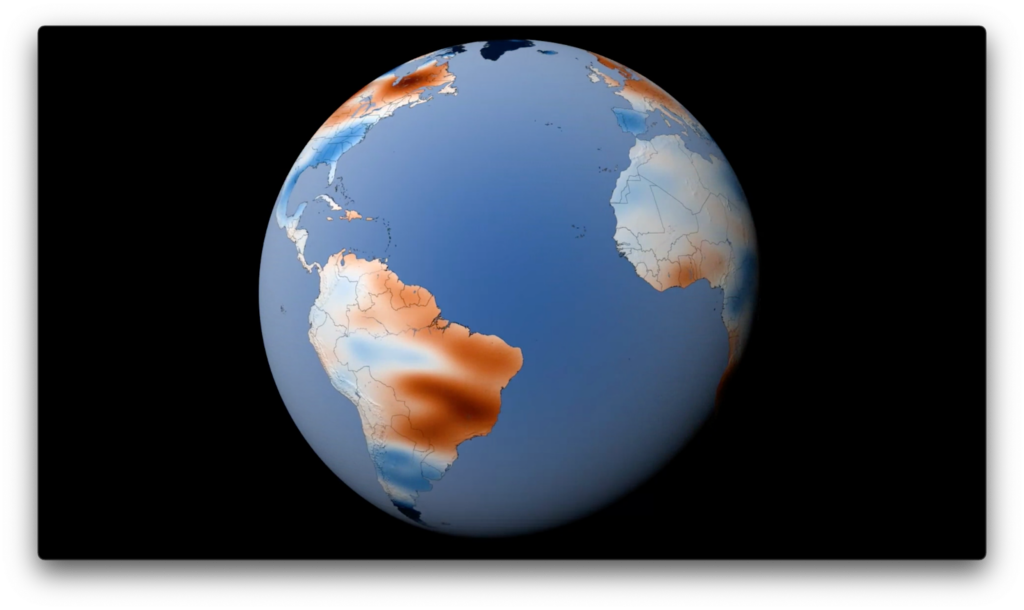
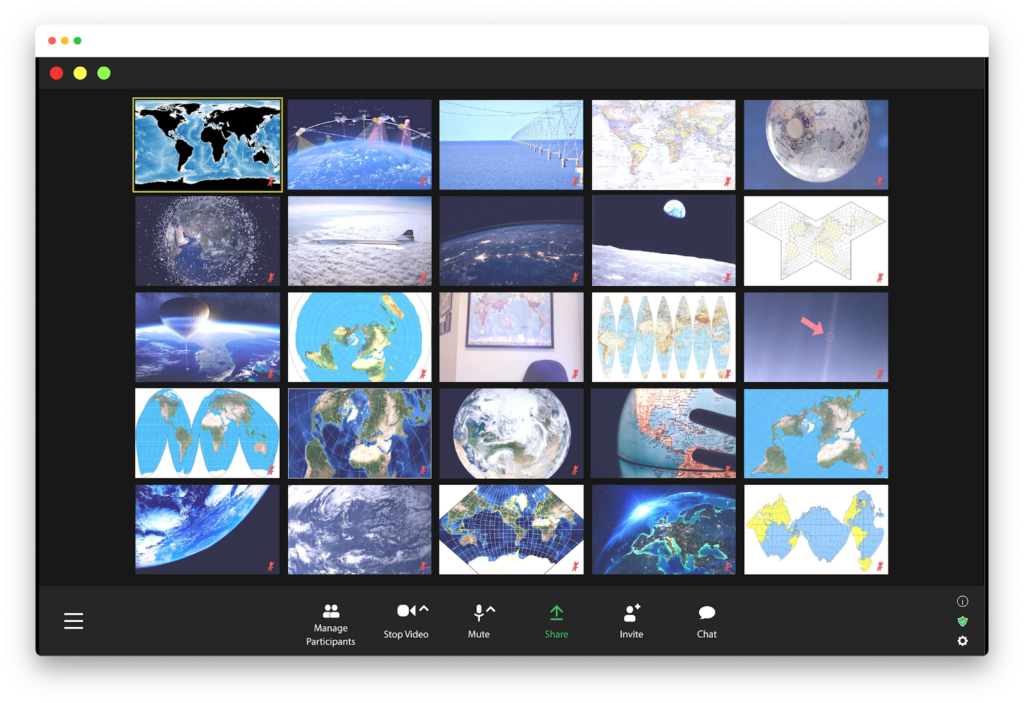
“What can we say, from a very global perspective? Where do we have information? Where do we not have information?”
“Especially given that it was for such a long time that we never saw each other in person you miss — or you miss the gossip.”
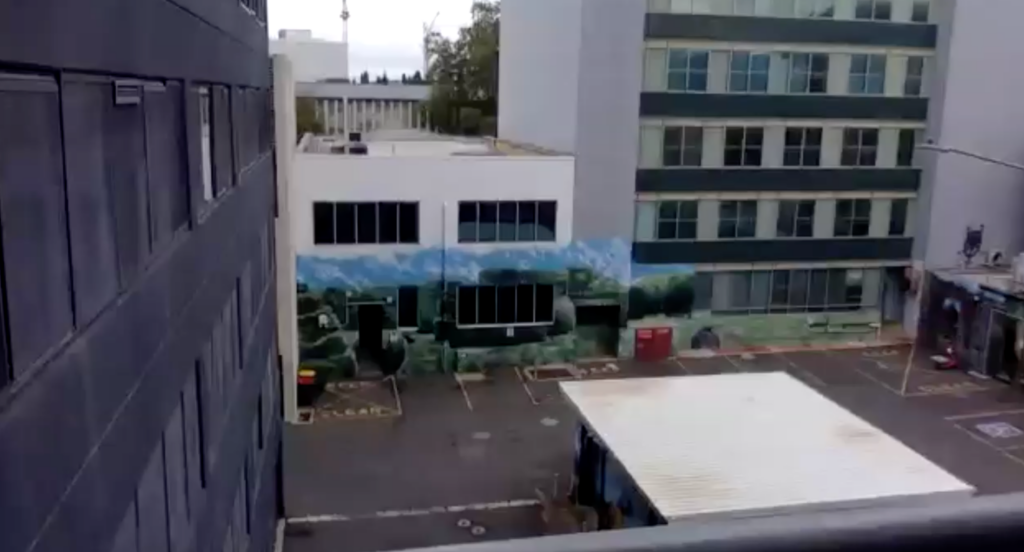
“And that sounds like it’s a totally trivial thing… But also you miss the chitchat, and what people have been up to, who they’ve been talking to, which a lot of that is actually, well, you’ve been talking to this policymaker, or this journalist and this group of children and that gives a lot of motivation on why are we actually doing all this work. And what’s the point. Because if you don’t have that, if you always have meetings that are focused on the content, this dimension and this motivation, I feel that really got lost.”
“I’ve always been interested in trying to see how, what are the conclusions that we can draw, that hold everywhere? And what are the conclusions that are very specific to different parts of the world, different societies, and different types of extremes?”
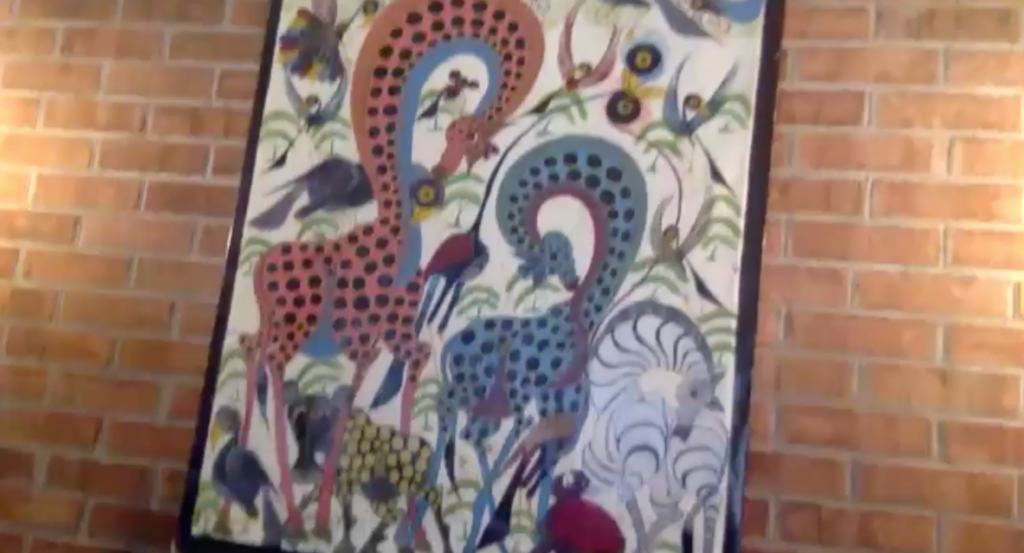
“Really, I’m down to very little expectation for the world. So I think you’re in a terrible moment to ask me this question.”
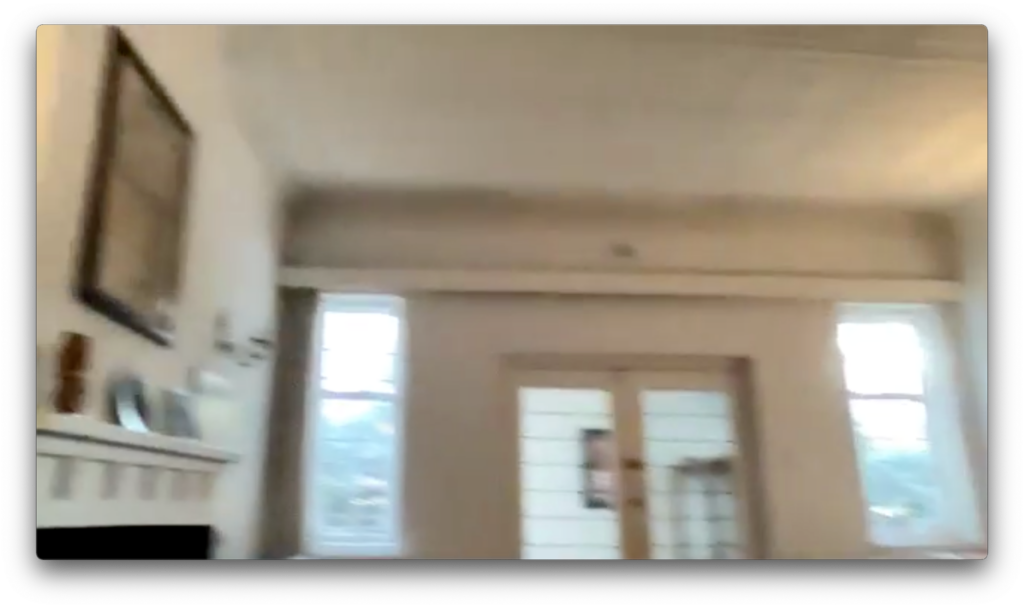
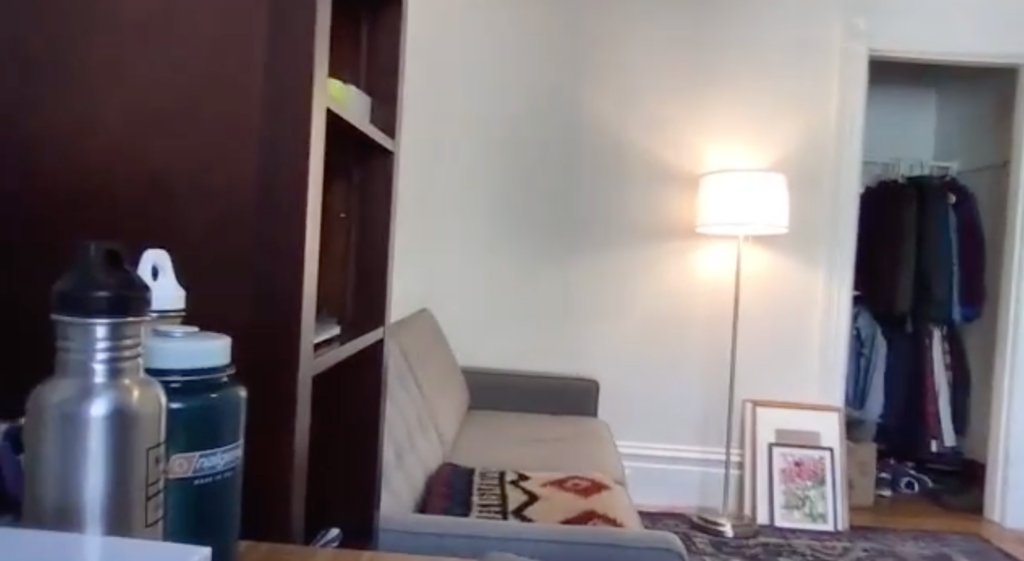
“It’s much easier to interact in that way. I find because you can read people’s body language in a much easier way also. I think it’s very difficult to do that via electronic media. So, interaction in a physical space is definitely easier I think, when you’re communicating between researchers.”
“I feel like my lab, I can perfectly do research that isn’t in the lab. But I have friends who are like, they’re going crazy about not going to the lab. For me, it’s the fact that I can’t interact with my students, and I find this so stressful.”
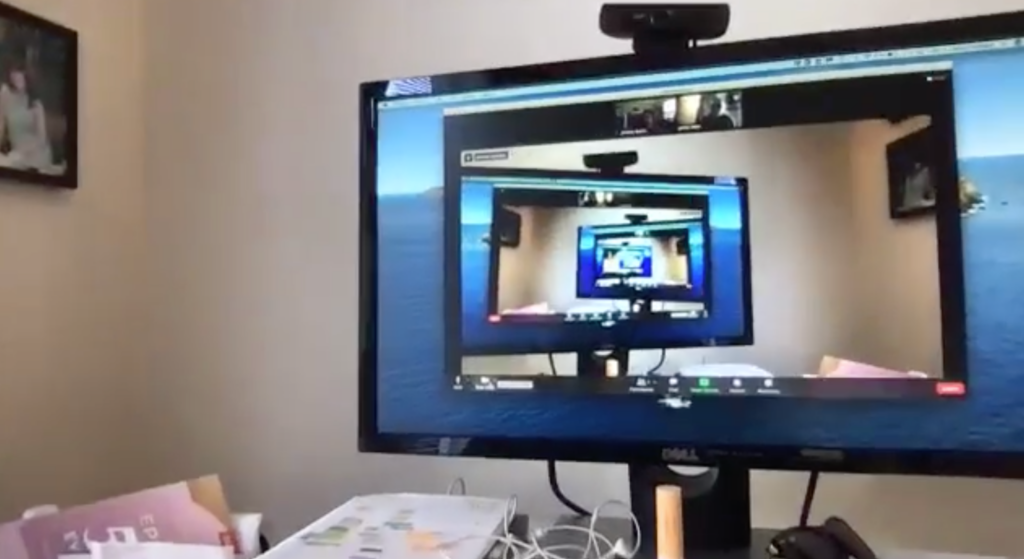
“I have students who were supposed to have done their masters fieldwork in the Galápagos, Spitsbergen, in Malaysia, all sorts of weird and wonderful places. And this was the experience of their lifetime that they were going to have, and they’re sitting at home working with mothers’ old data. I mean, how boring can it be.”
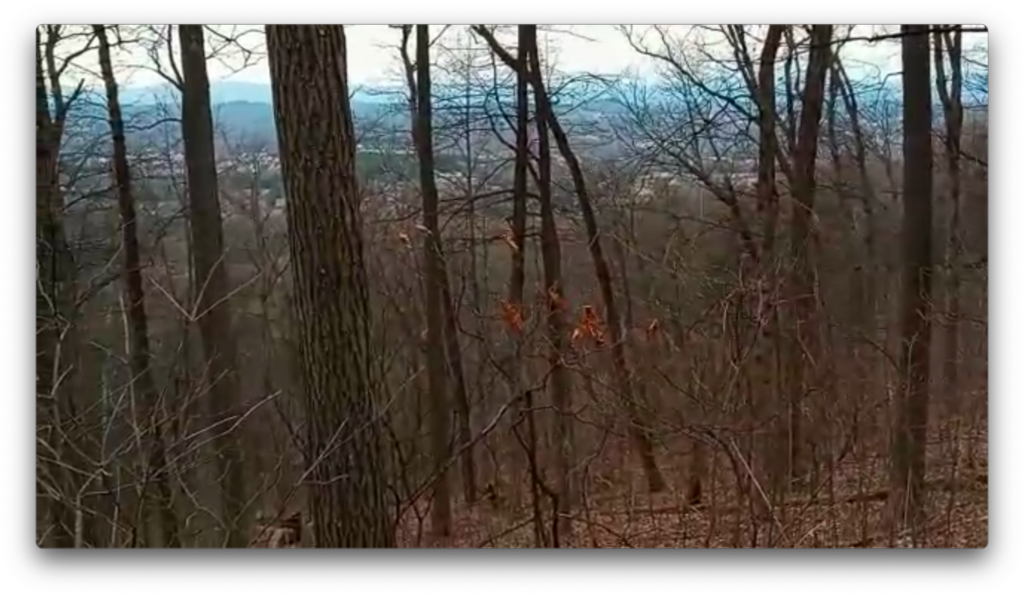
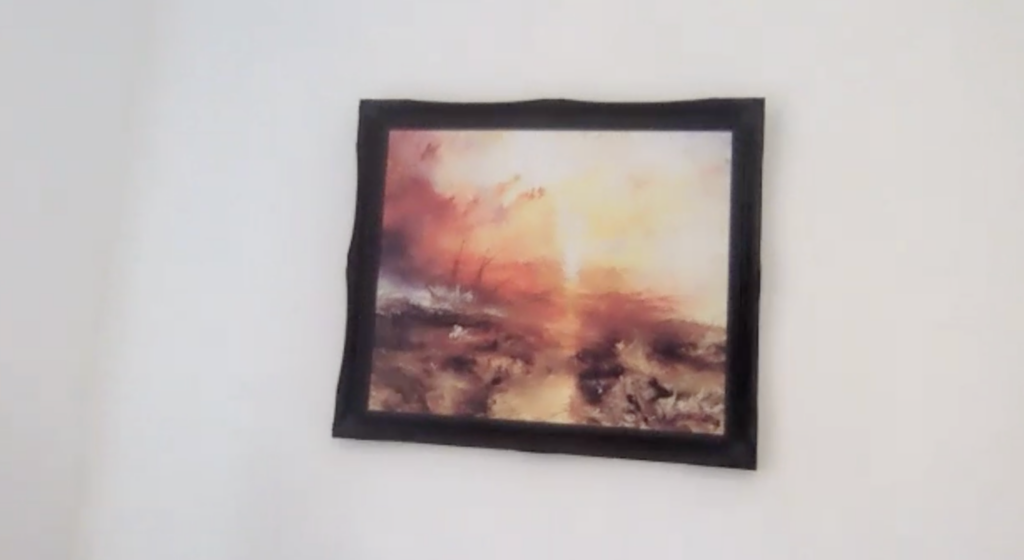
“I was one of those idiots who had about 200,000 miles a year flying around because of all the projects I was engaged with. And I was running international collaborations. So, I was very much global, in that sense. I haven’t been on an airplane since literally March 11th, 2019.”
“But then, you know, technology facilitated more or less continuous engagement in many cases, even more intense engagement with collaborators and colleagues worldwide. It was an interesting challenge of sorting out time zones and things like that, but I was used to that mostly, you know, point to point. But then you have to sort out multiple time zones across the globe, then the challenge becomes rather substantial.”
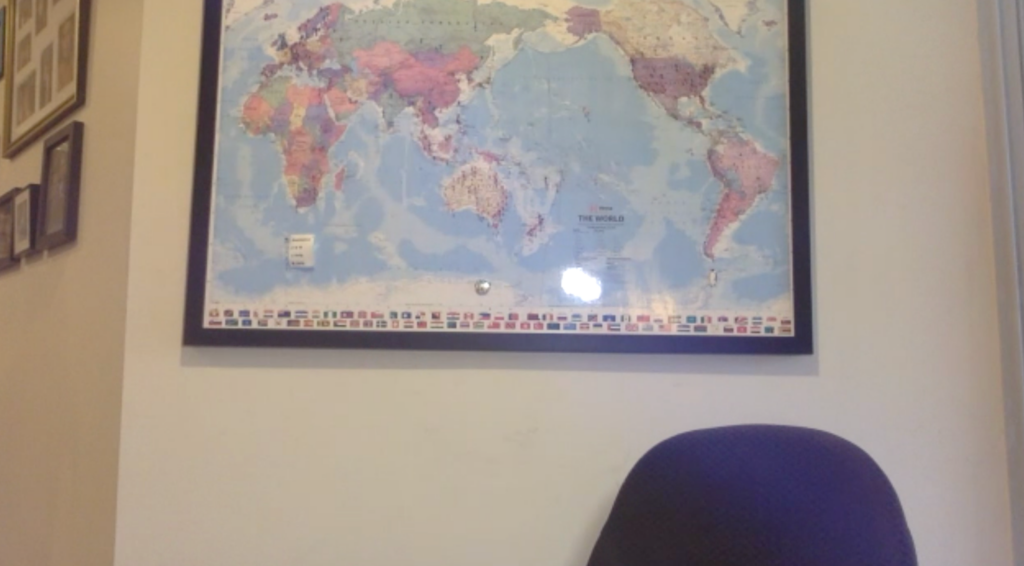
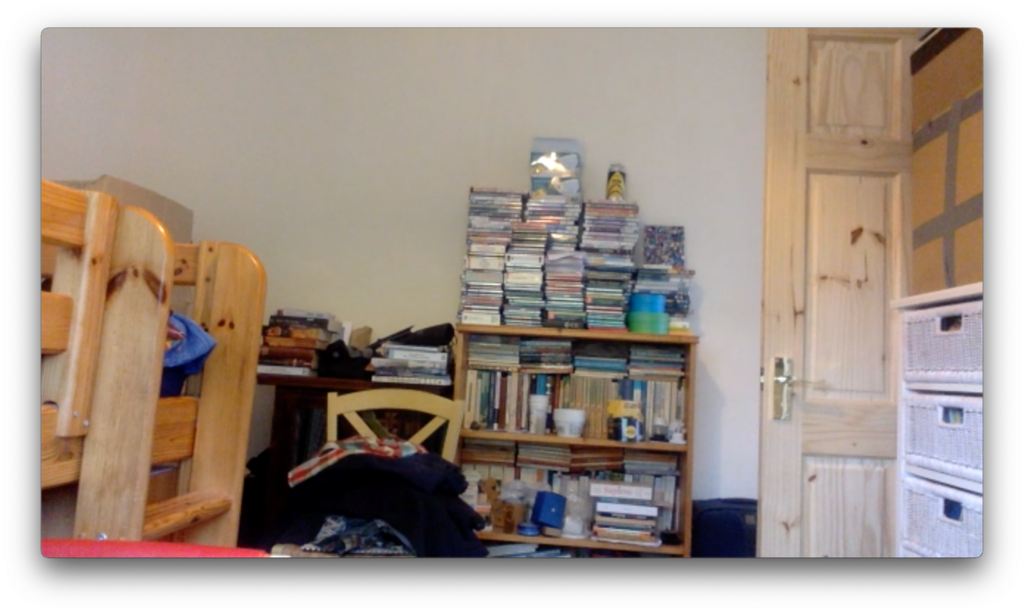
“‘Save the planet.’ Well, the planet is going to do just fine. Thank you very much. This is for our own sake, that we should be doing something. And it’s been really hard to communicate in terms of biodiversity, but I think the COVID pandemic has made it much easier for people to understand that yes, we do need to do something about … biodiversity, but for our own sake. And in that sense, the pandemic hasn’t surprised me. And in some ways, it’s made it easier to do the communication that I do.”
II. El Paseo Community Garden: Recognizing Our Elders and Rebuilding Intergenerational Communities
Tamara Becerra Valdez
Nuestra Herencia—a film series project currently under production—brings together a series of short documentary films exploring histories, gardens, and legacies through the lives of ten senior gardeners of El Paseo Community Garden/El Paseo Jardín Comunitario in Chicago, Illinois. The short film series uniquely recognizes the individual lives of our elders and their stewardship of the garden and engagement as long-standing residents of the Pilsen neighborhood, while addressing broader issues of immigration, gentrification, and environmental justice.
Early on, the production team, composed of volunteer gardeners at El Paseo, created ongoing relationships with the elders at the garden. This familiar exchange between them provided for more free and easy re-telling of the elders’ personal narratives on camera. In one interview, elder gardener Carlos explains,
For me the garden has given me life. I used to be a very depressed person, because I didn’t have much to do. And then I came and played my guitar and started to get involved [in the garden]. And all of that, all of this reminds me of my youth, when I was back living in a little town named Los Herreras in Durango. My dad and all of us were countrymen. Ah…we cultivated and grew fruits, soil, vegetables, and all of that. And when I came here [to El Paseo] and got involved, then all of that started to vanish, the depression and all. And that’s why I’m here, because these are things that God has given me.
Carlos continues,
…And when I water the plants, each plant gives me a different aroma and fragrance, and it reminds me of my town and the mountains. Sometimes when I would water the prairie, I would feel like the flowers would move at the rhythm of the water, and they looked like they were dancing. And that would make me happy.
Carlos Nuñez, Elder at El Paseo Community Garden
The initial year of the pandemic was especially difficult for our senior gardeners. The garden closed for several months and their “social space” was no longer safe, or accessible. The COVID-19 pandemic quickly revealed the urgency of documenting and preserving the stories of the most cherished and respected senior gardeners at El Paseo.
For me, it [El Paseo] has helped me a lot because this is a beautiful place to breathe. In other places, we couldn’t go out, but here we would wander. That is what kept me alive. The garden. Yes, it’s very beautiful here.
Gloria Barrios, Elder at El Paseo Community Garden
In thinking more about gardens as overlapping sites of history, legacy, and testimony, sustainable gardening systems, such as seed keeping and perennial plantings become metaphorical approaches to reconnecting with distant relatives and beloved homelands. Gardening is important, but seed saving is crucial. Gardeners frequently save seeds as an attempt to grow a better crop the next year, save money, and in order to trade with others. However, a seed holds more than its genetic logic. Seeds hold memory. For many, seeds are vessels for belief and hope.
Over the years, the gardener maintains a reciprocal exchange with plants—cultivating an intimate relationship to the earth, preserving memories of years before, and observing their own personal transformation in the process. How can gardening serve as a reminder of one’s cultural heritage and identity? How can seed saving make stories and traditions more widely known? How can seeds bring invisible legacies to the forefront? Seeds are relatives. They prompt discussions on creation, belonging, and heritage. Seeds are a living archive and therefore ask us how archives can become more participatory and serve as a transmission of history rather than being frozen or fixed. Seeds communicate physical, historical, and cultural relationships as they relate to agriculture. Some of us collect and carry seeds in an attempt to cultivate our “homelands” elsewhere. There is a growing inter-generational movement of Indigenous peoples who are leading the rematriation of seeds in order to repair and heal after more than 500 years of separation, removal, and colonization. Seeds are coming home.
…Throughout the land, they grew corn. My grandpa would go up the hill, dig holes, and plant beans. Then he would harvest it when it was ready. The beans from our hill would always be delicious. It was so beautiful. I loved all of that…This garden does bring back memories of when I was a child. It [El Paseo] brings back many memories of the beauty that is nature.
Gloria Barrios, Elder at El Paseo Community Garden
In William Least Heat-Moon’s book PrairyErth (1991), he envisions the deep mapping of a place, giving the needs and desires of the earth, its people, the landscape, devastated or rebuilt, equal or greater consideration to the dominant narrative of a place or a culture. Deep maps require us to prioritize radical, peripheral histories; take note of everyday re-occurrences; make time for conversations with passers-by or strangers; and to listen deeply to elders. Deep maps are more attuned to a vertical understanding of the world than a horizontal one. They recognize the invisible relationships to and of our multi-species, more-than-human companions. There is no claim of objectivity—you are part of the story.
Emerging from each of the elder’s stories in Nuestra Herencia, the garden at El Paseo reshapes itself beyond its near one acre of land in Chicago by including far away imagined landscapes of mountains, prairies, and homesteads across Mexico, Colombia, El Salvador, Guatemala, and Puerto Rico, all the while, acknowledging the political and social challenges that may have initially compelled the elders to resettle in Chicago many years before. It is in this spirit of hopefulness and preservation that this series of short documentary films presents the importance of recognizing our elders and rebuilding intergenerational communities through storytelling, gardening, and living archives.
El Paseo Community Garden is guided by the mission to strengthen environmental stewardship and civic engagement while protecting equitable green space on behalf of the community. Learn more about the work we do in Chicago, IL at https://elpaseogarden.org.
III. A Loose-leaf Compendium of Introduced Species
Simon Browne
To make use of what has been difficult over the past year (time and distance), I began collecting botanic materials with the intention to index and understand the ecologies of the limited local areas that I dwell in and in order to orient myself where I live in the Netherlands. At this time, I am far from my native Australia, where the seasons are reversed, and borders restrict the entry of introduced species, some which I recognize from sight, some from cultural memory. I collected plants and items that had cultural resonance within my local surroundings: weeds, flowers, and seeds, items that had drifted into paths and pavements on the reclaimed land of urban Rotterdam and alongside its namesake Rotte river. These items were pressed flat in books; during this time, they were recorded as catalogue entries in the bootleg library, an online shadow library of republished texts. Traditional metadata fields such as title, authors, timestamp, summary, and tags have been substituted for the Dutch and English names, time of entry, description, location, and categorical relations to the library’s contents. This collection is an occasion to collect and redistribute natural and cultural items, tied to paths of immigration and trade, cultural symbolism, and food and medicine.
IV. The Planet as Archive
Susan Cahill and Mél Hogan
Anna-Sophie Springer[2] was the November 2021 workshop guest of The Whole Life Academy Berlin’s “Un-/Learning Archives in the Age of The Sixth Extinction” workshop.[3] In her talk, she told stories that showed, in no uncertain terms, how planetary conditions maintain life in ways that are complex and fragile. One of these stories about dying antelopes inspired the writing of “Diagnosis of a Planetary Condition.”[4] Specifically, this case—where more than 200,000 saiga antelopes died in central Kazakhstan in 2015—demonstrates how climate change has altered living conditions so severely as to create a mini but sudden extinction event. As temperatures went up, bacteria already present in the antelopes’ tonsils changed in composition and poisoned their blood, causing them to die very quickly.
In “Diagnosis,” we argued that despite such vivid examples, there is a presumed futurity to white settler imaginaries that manifests itself in the belief that the earth can absorb the violence and extractions of ongoing colonial-capitalism through a presupposed, but not maintained environmental balance or homeostasis. Like misguided ideas about the “free-hand of the market,” the idea that natural systems will “sort themselves out” over time is a failure to recognize that while things can recover or transform, both neoliberal and settler ecosystemic thinking can— and often do—result in destruction and death, and have outcomes that are getting generally less favorable for humans and planetary survival.
We started “Diagnosis” with this question: “How does white settler society envision its future?” At the time, we asked this question in terms of how white settler models of conquest and domination deny the interconnections and relations between the human and more-than-human, a denial rooted in colonial-capitalist logics that are ultimately collapsing this planet and its systems. Here, as a part two of that think-and-feel piece, and partly also as a reflection of the workshop series, we ask questions of the future by way of the archive: how can we push beyond white settler conventions of the archive as static, symbolic, and representative, toward a more holistic and dynamic model that emphasizes relationality and lived spaces? What could such thinking mean for environmental action in the face of mass climate events?
So far, efforts to collectively archive humanity involve things like collecting and storing seeds,[5] ice cores,[6] DNA,[7] art and artifacts, paper documents, and digital data. These large-scale archival projects profess to collect and hold large-scale examples of single items for research, capital gain, and/or long-time storage. Framed as comprehensive sampling, these static repositories are discrete histories and knowledges that reveal more about the dominant belief and value systems of the collectors than coherent representations of the world in which each collection is/was/has been involved. As Tadani Nadim articulates, these types of archives reveal an “unfinished business” anchored in ongoing “processes of decimation, displacement, and reclamation of imperial formations” (quoting texts by Salman Rushdie, as quoted by Banu Subramanium, and Ann Laura Stoler, respectively).[8] They are a partial, fragile archive of humanity anchored in white settler conceptions of distinct and separate collectibles that often deny knowledges created by and dependent on relations and interconnections through multiple systems. Settler-focused, the very idea of the archive is something that re-presents or re-enacts as evidence when needed, upholding dominant narratives that serve specific nation-building ends.
Lately, there have been more recuperative readings in a variety of academic disciplines that move away from discrete models and itemized systems, toward holistic and planetary frameworks of knowledge, offering new approaches for thinking more seriously about human and more-than-human partnerships with their habitats.[9] While many Indigenous ways of thinking, doing, and being, in the Americas and beyond, are anchored in the reciprocities of the human worlds and the worlds of land, animals, and space, only recently has settler scholarship begun to rethink its models—and catch up.[10] For instance, in a recent article published in the International Journal of Astrobiology, the authors write of a “planetary intelligence” that functions as a “collective knowledge operating at a planetary scale.”[11] This piece, along with others,[12] emphasizes the importance of relationality and that “the correct scale to understand key aspects of life and its evolution is planetary, as opposed to the more traditional focus on individual species.”
This perspective moves away from settler imaginings of knowledge as parochial or discrete; rather it highlights that understanding can only be produced in the spaces of interaction between multiple systems on the scale of the entire planet. If we can harness white settler enthusiasms for the archive—with the precise and precious intensity of collecting, conserving, and treasuring— but couple it with the understanding of knowledge as only possible in the interactions and relationships of all systems together, what are the potentials for environmental activism and the future work of the climate movement? Can we activate white settler responsibility to the environment and sustaining earth’s ecosystems through imagining the planet itself as an archive?
So too, multiple academic frameworks that encourage planetary intelligence and collective knowledge systems draw from the Gaia hypothesis, “which proposes that the biosphere interacts strongly with the non-living geological systems of air, water, and land to maintain Earth’s habitable state—to explain that even a non-technologically capable species can display planetary intelligence.”[13] This type of model brings long overdue attention by settlers to this question of coexistence and kinship relations, but it also sets in motion the possibility of thinking of the archive as a living and dynamic entity. For the planet to be thought of as an archive, then, it is “intelligent” in the sense that it reflects to us the histories and legacies of humanity—and it becomes the most comprehensive and responsive archive imaginable.
However, despite excitement about and theoretical potentials of such conceptual openings, humanity et al. are left in a world of our own making and suffering from consequences that we have collectively (however, unevenly) set in motion.[14] There seems to be agreement that the precipice is t/here, that we are on the edge of it, and that we are living in a moment of forced reckoning with this significance, and the potential loss of humanity and human potential. Once extinction happens, it is over.
Even if academia reframes white settler worldviews away from discrete models of expertise toward collective systems and knowledge production as planetary, what now? Even if we shift from white settler demands anchored in colonial-capitalist conquest and extraction toward responsibility to the environment and sustaining earth’s ecosystems through understanding the planet as an interdependent, holistic system, how then, to preserve Earth as an archive without getting lost in its imitations, either by virtual worlds or by terraforming other planets to its likeness? How do we avoid typologies that oversimplify lived experiences? How do these things become urgent—rather than conceptual—in climate catastrophe, in the apocalypse?
So, then, for the purposes of this workshop outcome, what would it mean to consider an archive as an antidote to extinction? Or— again—what might it mean to feel or read the planet as archive? What kind of (exploratory, conceptual, creative, practical) project is it to undertake the preservation of everything— to acknowledge that to preserve one thing we must preserve all things? What gets to be saved? Whose memory? For what future? What is the role of the earthly archive of human and more-than-human experiences when the future is this uncertain?
This contribution is published in the framework of the Whole Life Academy as part of the workshop “Un-/Learning Archives in the Age of the Sixth Extinction”.
- This contribution is published as the workshop findings of “Un-/Learning Archives in the Age of the Sixth Extinction”. The workshop was convened by Priyanka Basu and Steve Rowell and took place online from October 2021 – March 2022 as part of the Whole Life Academy Berlin. The workshop was initially conceived together also with Imani Jacqueline Brown and Dubravka Sekulić. You can find an in-depth introduction to the workshop’s topics and methods here. ↑
- See Anna-Sophie Springer, personal website, http://annasophiespringer.net/. ↑
- The Whole Life Academy Berlin, Workshop #9: Un-/Learning Archives in the Age of The Sixth Extinction, with Priyanka Basu and Steve Rowell. “This workshop will deal with archives as related to overlapping sites of nature/culture, climate change, deep time and the built environment. Is the archive a viable repository of potential regenerative material for the future? Can it be an input in a positive feedback system of mutually assured destruction – an irrational fear response in the face of loss that condemns that which is not-yet-dead to the already-past?” ↑
- Mél Hogan and Susan Cahill, “Diagnosis of a Planetary Condition,” H4F Blog / Sustainable Academia Blog, January 10, 2022. ↑
- Tadani Nadim, “Haunting Seedy Connections,” Routledge Handbook of Interdisciplinary Research Methods, eds. Celia Lury, Rachel Fensham, Alexandra Heller-Nicholas, Sybille Lammes, Angela Last, Mike Michael, and Emma Uprichard. New York: Routledge, 2018, p. 239–247. ↑
- The Canadian Ice Core Lab (CICL), https://www.ualberta.ca/science/research-and-teaching/research/ice-core-archive/index.html. ↑
- Kari Paul, “Fears Over DNA Privacy as 23andMe Plans to Go Public in Deal With Richard Branson,” The Guardian, February 9, 2021. ↑
- Nadim, “Haunting Seedy Connections,” 239. ↑
- “They believe that the concept might actually help us deal with global issues, including climate change and even extraterrestrial life.” In Viktor Elias “The Earth Itself May Be an Intelligent Entity, Scientists Say,” Greek Reporter.February 18, 2022. ↑
- There are many examples of Indigenous writers whose work should be credited in discussions of relational and planetary intelligence. See, for instance: Leanne Betasamosake Simpson, “Land as Pedagogy: Nishnaabeg Intelligence and Rebellious Transformation,” Decolonization: Indigeneity, Education & Society 3, no. 3 (2014), p. 1–25; Zoe Todd, “Fish, Kin and Hope: Tending to Water Violations in amiskwaciwâskahikan and Treaty Six Territory,” Afterall 43 (Spring/Summer 2017): 102–107; and Zoe Todd, “Refracting the State Through Human-Fish Relations,” Decolonization: Indigeneity, Education & Society 7, no. 1 (2018): p. 60–75. ↑
- Adam Frank, David Grinspoon, and Sara Walker, “Intelligence as a Planetary Scale Process,” International Journal of Astrobiology, February 7, 2022. ↑
- For another piece that broadly engages with this type of framework, see Tristan Greene, “Scientists Say Humans Are Part of a ‘Planetary Intelligence.’ Counterpoint: Humans Are Parasites,” Neural: The Next Web, February 18, 2022. ↑
- University of Rochester, “Can a Planet Have a Mind of Its Own?” Phys.org, February 16, 2022. ↑
- Scott Alan Johnson, “Webb Space Telescope Might Be Able to Detect Other Civilizations by Their Air Pollution,” SciTechDaily.com, February 23, 2022. ↑
Connected Material
A conversation on compulsive archiving in relation to a private archive of press photography on Liberia.
Epistolary narrative, dialogism, intertextuality, speculative narrative — we imagine this text to be letters between the two of us across different temporalities, making use of a speculative and fragmented narrative in line with the themes we explore in our work: archiving the unarchivable, emotions, memories, and other human conditions within the horizon of extinction.
Chto Delat’s installation Canary Archives employs the imagery of the canary in the coal mine, once used to alarm miners when carbon monoxide levels rose. Where is the canary today, that tells us wether the danger is real? It seems to have gone silent, the sharpest signal it can send. In an emergency newspaper issue under the impression of the Russian war on Ukraine, Chto Delat assembles anti-war views of artists and critics and expresses their solidarity with the Ukrainian people.
The audio map “biography of kecak” is an attempt to decrease this discrepancy between the singularity of archival knowledge and the multiplicity of individual realiities – using the sonic as its material.
Interrogating the archive of “green” extractivism is not just about uncovering access to knowledge, legal knowledge, for example, that can help expose (ecological and economic) crime and that can thus be a starting point for empowering true alternatives and thus alternative ways of living and organizing economic processes. It is also about creating a resonant space for shared thinking and reflection.
Accumulation and multiplication of images is an accumulation of the hidden histories behind them. How do we recover these invisible histories?
CLEPTOCRAZIA is an art and science festival curated by Valeria D’Ambrosio at Villa Romana in Florence. The project aims to disseminate knowledge on the roots of the environmental crisis through a cycle of lectures, screenings and performances with the contribution of international artists and scientists.
This collective chain uses multiple entry points to reflect on the encounter of archival practices, objects and material with non-linear timelines.
This Academy workshop addressed archives as related to overlapping sites of nature/culture, climate change, deep time, and the built environment. The texts and visual materials include an introduction to the workshop’s components and sites.
Beyond the objects in any given archive is a myriad of people, encounters and exchanges. The desire to locate the human element beneath archives is challenged by new technology. As part of ‘Life Stories and Archives’, we began a virtual ‘common archive’. Our collaborative thread addresses pertinent questions arising from shared interests in how individual’s origins, biases, networks and political struggles fuel the need to collect.